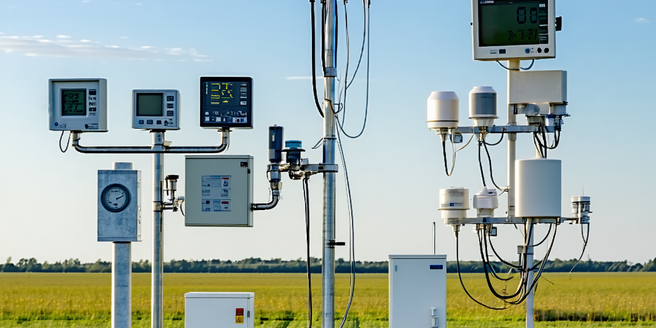
Introduction to Weather Station Components
Understanding weather station components is crucial for accurate data collection. These components include sensors for temperature, humidity, wind speed, and precipitation. Each sensor is designed to withstand varied environmental conditions, ensuring reliability over time. By having a grasp on the essentials of each component, users can better assess their station’s functionality. Additionally, knowledge of these elements aids in selecting the right upgrades when necessary. Hobbyists and professionals alike benefit from keeping their weather stations in top-notch condition. Reliable data is indispensable for agricultural planning, scientific research, and even casual weather observation. As technology progresses, staying informed about component advancements enables users to maximize the utility of their weather stations.
Assessing the Need for Component Upgrades
Evaluating the performance of your weather station is the first step in deciding whether an upgrade is necessary. Factors like accuracy, data frequency, and long-term reliability play a significant role. Over time, sensors may degrade or become outdated, leading to inaccuracies. Periodic assessment prevents these issues from affecting data quality. Newer components often offer improved sensitivity and better data processing capabilities. Observing changes in environmental conditions or expanded data requirements might also prompt an upgrade. Staying proactive about maintenance helps ensure the continued effectiveness of your station, thereby preserving the precision and accuracy vital for weather-dependent decisions.
Benefits of Upgrading Your Weather Station
Upgrading your weather station can significantly enhance its performance and data accuracy. Newer sensors provide more precise readings, improving the quality of meteorological data. This is essential for research, agriculture, and outdoor event planning, where precise weather data is critical. In light of climate change, having accurate weather forecasting tools has never been more important. Enhanced technology often leads to a more user-friendly interface and better connectivity options, enabling easier data analysis and sharing. Moreover, upgraded components typically feature improved energy efficiency and durability, extending the life of the station. Users experience the satisfaction of maintaining a cutting-edge system capable of meeting modern meteorological demands.
Latest Technology in Weather Station Sensors
The rapid advancement in sensor technology has revolutionized weather stations. Modern sensors are equipped with enhanced precision and longer durability, translating to more accurate and reliable data. Innovative materials and compact designs allow these sensors to withstand harsh environments and remain functional over longer periods. This progress not only benefits meteorologists but also aids various sectors such as agriculture and aviation in making informed decisions. Some cutting-edge models integrate wireless capabilities, facilitating real-time data sharing and remote monitoring. Moreover, solar-powered options enhance sustainability by reducing energy consumption. Staying updated with these technological advancements ensures that users maintain an efficient weather station that meets contemporary needs.
Step-by-Step Guide to Upgrading
Initiating a weather station upgrade can feel daunting, but a structured approach simplifies the process. Start by identifying the components that require attention, such as turbines, anemometers, or hygrometers. Compare specifications of old versus new models to understand potential benefits from the upgrades. Don’t forget to consult with experts for advice tailored to your specific station needs. Planning involves allocating a budget, researching vendors, and scheduling the replacement process. Once new components are acquired, carefully follow installation guidelines to avoid damaging sensitive equipment. Post-installation, conduct several test runs to ensure the accuracy and reliability of readings. Regularly documenting performance helps verify the success of your upgrade.
Maintenance and Troubleshooting After Upgrades
After upgrading your weather station, continued maintenance is crucial. Regular cleaning of sensors helps maintain accuracy, while checking for software updates ensures all system components function with optimal performance. Troubleshooting is essential when anomalies in data arise. Investigate possible causes such as connection issues, power supply failures, or sensor malfunctions. It’s wise to document any issues and how they were resolved for future reference. Preventative measures, like routine checks and timely replacements of defective parts, contribute to a long-lasting, high-quality station. Maintaining a log of all activities related to maintenance provides insights into optimizing weather station operations.
